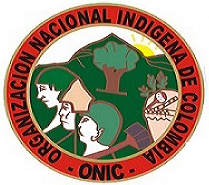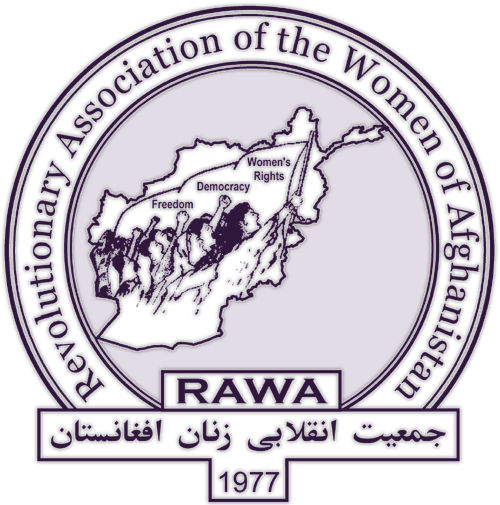Peru
Peru to move ahead with Camisea gas expansion?
Peru seems poised to move forward with the controversial expansion of the Camisea gas project in the lowland rainforest of Cuzco region, following the Jan. 7 release of a new document by the Vice-Ministry for Interculturality. The document is an official response to consortium leader Pluspetrol's own response issued a week earlier to the Vice-Ministry's objections to the Environmental Impact Assessment for the project. The new response says the Vice-Ministry is lifting 34 of its 37 objections to the impact study. The remaining three points concern protection of the watershed of the Río Paquiría, which could impact where the consortium conducts seismic tests. But the statement apparently raised no concerns about isolated indigenous bands living in the concession area, which overlaps with the buffer zone of Manu National Park, hailed by UNSECO as having a level of biological diversity that "exceeds that of any other place on Earth."
Peru: new confrontation at Conga mine site
In a new mobilization on the contested Conga mine site in Peru's northern region of Cajamarca, hundreds of local campesinos on Jan. 16 again marched to the shores of the alpine lakes that would be destroyed by the project. National daily La Republica, citing unnamed sources, said the marchers pushed past security guards, and caused "disturbances" and "material damage" to equipment of the Yanacocha mining company. One protester was reported arrested by National Police troops. However, Cajamarca-baed popular organization Tierra y Libertad in a statement on Facebook said only that some 2,000 ronderos (members of the peasant self-defense patrols) from the local provinces of Bambamarca and Celendín marched on the site, taking a six-hour roundabout way through mountain paths to avoid the roadblocks "illegally maintained" by National Police and Yanacocha security.
Peru: Achuar leader on prison hunger strike
Achuar indigenous leader Segundo García Sandi began a hunger strike Jan. 7 to demand his freedom at Huayabamba prison in Iquitos, Peru. García Sandi was arrested Dec. 5, on charges of tampering with an oil pipeline run by Argentine company Pluspetrol through his people's territory in the remote north of Loreto department. He claims he is being held illegally without evidence, but a habeas corpus action filed by his supporters has met with no response by Peru's judicial authorities. García Sandi's organization, the Río Corrientes Federation of Native Communities (FECONACO), asserts the arrest is retaliation for his demands for environmental justice. FECONACO reports that five Achuar children died in December as a result of contamination related to oil operations in the area, and that a state of emergency announced by Environment Minister Manuel Pulgar-Vidal in October for the Corrientes Valley, calling for special monitoring, is going unenforced. The Environment Ministry in November took the rare step of fining Pluspetrol $7 million for contamination to the Loreto rainforest. (Servindi, Jan. 11; La Región, Loreto, Jan. 8; Mariátegui blog, Jan. 7; La Región, Dec. 20; AP, Nov. 27)
Peru: coup d'etat against Humala planned?
The Peruvian blogosphere is abuzz with rumors of an imminent coup d'etat against President Ollanta Humala, fomented by elements of the opposition APRA party. Humala has reportedly put off all travel abroad and is limiting his trips into the interior of the country, staying close to Lima for fear of a move against his government if he leaves the capital. The National Intelligence Directorate (DINI) has reportedly warned that elements of the National Police are discussing a strike over various greivances, actually aimed at causing an explosion of chaos and debilitating the government—following the model of the right-wing coup of Feb. 5, 1975, that brought Francisco Morales Bermúdez to power. Humala is said to have lost the confidence of the Armed Forces Joint Command, which is unhappy with his execution of the counter-insurgency program in Apurímac-Ene River Valley (VRAE), where a remnant faction of the Sendero Luminoso guerillas remains active. (Raúl Weiner in La Mula, Dec. 23)
Peru: controversial copper project moves ahead
Arizona-based Southern Copper is set to restart work at its controversial $1 billion Tía María copper project in Arequipa, Peru, within the next 90 days, Mines and Energy Minister, Jorge Merino said following a public meeting with local residents Dec. 19. Merino told Andina news agency that receiving support from the local community is “a big step forward," adding that it shows how "dialogue and coordinated efforts from national, regional and local authorities can make mega-projects happen." Peru's government sees the Tia Maria project as critical to boosting investment in the mineral sector. "It will show we have made inroads to resolve conflicts that have delayed several mining projects in Peru over concerns by communities about their environmental impact," Merino said.
Peru claims new blow against Sendero Luminoso, assails Bolivia
Peru's President Ollanta Humala on Dec. 9 announced the capture of the new commander of the remnant Sendero Luminoso column in the Upper Huallaga Valley—one of two remaining pockets of coca-producing jungle where the scattered Maoist guerilla movement is still keeping alive a local insurgency. The commander was named as Alexander Fabián Huamán AKA "Héctor"—said to have assumed leadership of the guerillas' "Huallaga Regional Committee" after the capture last year of "Comrade Artemio," the last "historic" Sendero leader (that is, dating back to the insurgency's heyday 20 years ago). Gen. Víctor Romero Fernández, commander of the National Police Anti-Drug Directorate (DIRANDRO), called the arrest a "hard blow" against the guerillas, and predicted that "Sendero Luminoso is disappearing in this zone." (InfoBAE, Andina, Dec. 9)
Peru: deadly clash as narco-flight intercepted
Agents of Peru's National Police force intercepted a small plane loaded with 300 kilos of cocaine paste in Oxapampa province, Pasco region, on Nov. 24, mortally wounding the pilot, a Bolivian national. Authorities said the agents, attached to the elite Tactical Anti-drug Operations Directorate (DIRANDRO), were staking out a clandestine airstrip they had discovered when the Bolivian-registered plane landed there. Three Peruvian crewmen were taken into custody, but the pilot was apparently shot in the stomach when he resisted. He was evacuated by helicopter to the nearest town, Ciudad Constitución, where he died in the hospital. The cocaine paste is believed to have been locally produced, and bound for Bolivia.
Peru: 'narco-terrorist' busted; narco-politician exposed
On Oct. 23, National Police in Peru apprehended in Lima an accused commander of one of the two surviving remnant factions of the Sendero Luminoso guerilla movement. The Interior Ministry named the detained man as Rolando Pantoja Quispe, and said he was under the orders of Florindo Eleuterio Flores Hala AKA "Comrade Artemio"—the notorious Sendero commander who was captured last year and condemned to life in prison. The ministry said Pantoja Quispe controlled cocaine trafficking in the Yanajanca Valley of Huanuco region, and hailed the arrest as a further blow against Artemio's crippled network. (BBC Mundo, Oct. 23)















Recent Updates
3 hours 32 min ago
4 hours 41 min ago
4 days 3 hours ago
4 days 3 hours ago
4 days 4 hours ago
5 days 15 hours ago
6 days 2 hours ago
6 days 2 hours ago
6 days 4 hours ago
6 days 5 hours ago